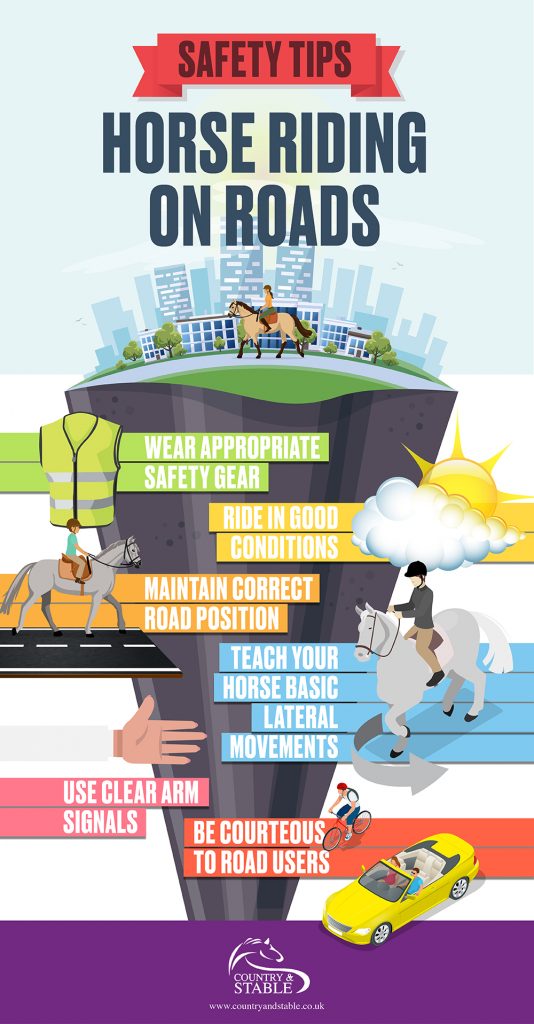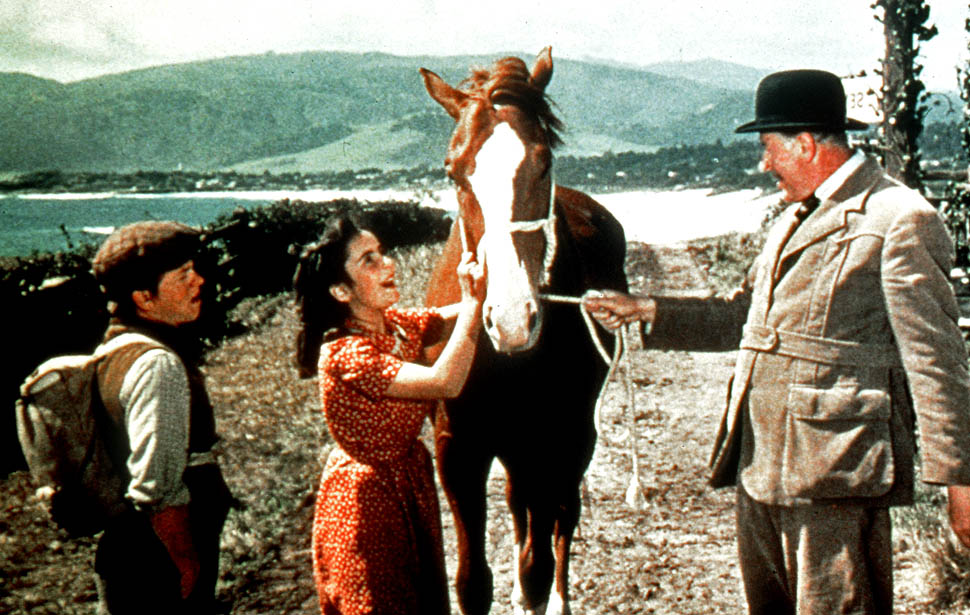
Safety Tips When Horse Riding On The Road
Whether you’re riding on a main road or a country lane, horses and their riders are amongst the most vulnerable road users. On occasions where it may be necessary to ride your horse on the road, it is imperative that you are fully familiar with the best practices when it comes to safety. If you aren’t, you are putting your own life and those of other road users in danger. Over the last year alone theBritish Horse Society (BHS) has found there to be a 29% increase in the number of incidents involving horses on Britain’s roads.
Here at Country & Stable we recommend that all riders read the section relating to horses in the Highway Code as these guidelines must be adhered to. The BHS have also detailed a few of the key points in this recommended helpful article.
Take a look at the graphic below for some essential top tips, and keep reading for even more advice from horse riding experts…

To further extend your knowledge when it comes to riding your horse on the road, we have also rounded up the best advice from a few equine experts.
Maintaining correct road position…
It is standard that horse riders are not permitted to ride on footpaths and should always ride near the kerb on the left hand side of the road.
If you are riding two abreast, perhaps if you are out hacking with an inexperienced horse, wherever possible, always position the more experienced horse nearer to the road. Of course differing traffic circumstances and changes in the road layout may require you to ride single file – In this instance ensure that there is an adult horse length gap between each horse and always lead with the more experienced horse.
Signals, turning and junctions…
When proceeding to turn whilst riding your horse, always check for traffic and signal in plenty of time to indicate your intention. Keep checking behind you and always watch and listen for traffic and be prepared to stop – likewise if you are approaching a hazard which requires you to move further into the road. We know that horses can be unpredictable, and even the most well-trained horse can react to its instincts and want to move quickly away from what they consider to be a threat.
Julie Brown, contributing editor of Your Horse magazine, shares her best advice when it comes to dealing with hazards on the road whilst riding your horse:
“It can be really useful to make sure your horse understands basic lateral movements such as leg-yield or shoulder-in for when you hack. Being able to turn his head away from the hazard in a shoulder-in for instance might just give him the bravery he needs to walk past without spooking or trying to run off.”
In the instance that you are experiencing a problem with your horse, hold out your right arm and slowly move it up and down to indicate drivers to slow down, or if you need the driver to stop, raise your palm in a ‘stop’ motion. In any circumstance, hazards are everywhere on the road and Sue Collins from the Ebony Horse Club warns riders to:
“Avoid metal grates where the horse might slip or be spooked, and be aware of pedestrians carrying umbrellas or items that might cause the horse to become uneasy.”

The importance of appropriate safety gear…
It is essential that you are kitted out with the appropriate safety wear before heading out riding on the road. As Chrissy Howick of the Budleigh Salterton Riding School suggests:
“Make sure you are seen and wear the correct gear as advised by the British Horse Society. That way if an incident occurs you know you have done your best to be correct, safe and seen.”
Riders must always wear a hat that adheres to the current standards which we have previously outlined in our in-depth guide on riding hats.
You are also advised to wear visibility clothing and body protectors to ensure that everyone on the road can clearly see you, even on bright, sunny days!
Julie Brown also emphasises the importance of making your horse visible too:
“There are hi-visibility pieces of kit for your horse – leg wraps, boots and breastplates are ideal. Another piece of kit which is invaluable, particularly if you lack confidence or are on an inexperienced horse, is an air jacket. These resemble a gilet and are easy to wear but if you’re unfortunate enough to part company with your horse they inflate, offering massive amounts of protection, especially for your neck.”
Etiquette towards other road users…
Drivers can often be frustrated when they spot horses being ridden on the road and you may find that they try to accelerate past you too quickly. The BHS has found that in the last year almost 40% of riders were subject to road rage or abuse. If you are unconfident when riding on the road, Anna Buffini, US young rider national champion, recommends:
“Always have a buddy and take baby steps…Take it slow if your horse is new at it. Start out with very short sessions and gradually let them get longer.” This advice is also truly pertinent if you are also feeling unconfident.
It is also good etiquette to thank other road users who slow down for you, pass carefully, or make an effort to give you right of way and time to manoeuvre on the road. A simple nod or smile may even change the way a particular driver will treat a horse and its rider next time.
Ready to head out on the road?
It is worth knowing that The British Horse Society also offer riding and road safety tests, and many riding schools also carry out training days in riding and road safety if you are interested in brushing up your skills and gaining the confidence to ride out on the road.
Article via Country & Stable UK




